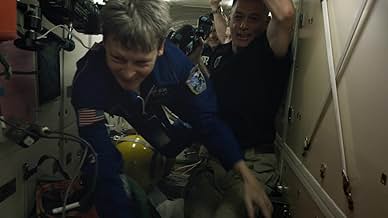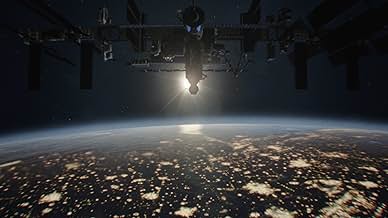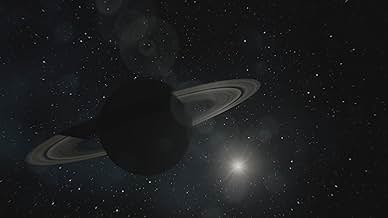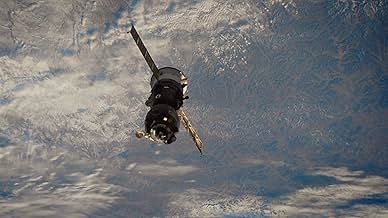One Strange Rock
- Mini-série télévisée
- 2018
- Tous publics
- 47min
NOTE IMDb
8,7/10
8,5 k
MA NOTE
L'histoire extraordinaire de la Terre et en quoi elle est unique et débordante de vie dans une arène cosmique en grande partie inconnue. Les astronautes racontent l'histoire de la Terre à tr... Tout lireL'histoire extraordinaire de la Terre et en quoi elle est unique et débordante de vie dans une arène cosmique en grande partie inconnue. Les astronautes racontent l'histoire de la Terre à travers une perspective unique.L'histoire extraordinaire de la Terre et en quoi elle est unique et débordante de vie dans une arène cosmique en grande partie inconnue. Les astronautes racontent l'histoire de la Terre à travers une perspective unique.
- Récompenses
- 1 victoire et 3 nominations au total
Parcourir les épisodes
Avis à la une
10dudde16
A very well written script. Story telling is mesmerizing. It keeps the audiences attention at all times. Learned a lot about our planet and exciting science that should everyone know.
As an Earth Science teacher in an urban school district I was very happy with my students engagement in the first episode of this series. Although just one episode I would rank this with the best episodes of cosmos, planet earth, and blue planet for student interest and behavior. I personally enjoyed it as well. Some of the photography is stunning and unlike what you will see in "Blue Oceans" and "Planet Earth" (not necessarily better but refreshingly different). Will Smith by no means makes the show but I don't think he takes anything away from it either, and he can be amusing at times. The Astronauts are going to be the real stars of the show, and they have come across great so far.
This show is wonderful. Story is amazing and cinematography is incredible but man... the Will Smith narrative scenes are cringe worthy. We have these awesome scientists and astronaut interviews then we get clips of Will Smith narrating to us like we're children. I hate to be harsh but his scenes are so distracting. Without him speaking this is the best Earth documentary since the original Planet Earth.
Some of the negative reviews here do tell a certain truth, One Strange Rock does not necessarily break all.sorts of new ground with a sorts of new information. It does deliver though, it's a beautiful show and the information is delivered in new and stunnunstu beautiful ways. To not watch this show because you think you've heard it all before would be a practice in absolute arrogance and unfortunate ignorance. The last thing any of us need to do is fool ourselves in to thinking we have learned enough. We owe it to all of these people to educate ourselves with the information they gave their lives bringing to all humanity:
Mission: Apollo 1 Date: Jan. 27, 1967 Fatalities: Gus Grissom, Edward White II, Roger Chaffee What happened: During a launch-sequence rehearsal for NASA's AS-204 Apollo mission, the cabin was filled with pure oxygen as part of its environmental control system. An electrical fault sparked a flash fire in the cabin. The fire spread quickly in the pure oxygen atmosphere, suffocating all three Apollo 1 crew members through smoke inhalation. The launch pad test site was renamed Apollo 1 in honor of the crew, and the accident led to major design and engineering modifications as well as revisions to test planning operations and manufacturing procedures.
Mission: Soyuz 1 Date: April 24, 1967 Fatalities: Vladimir Komarov What happened: Soyuz 1, the Soviet space program's one-day mission, launched on April 23, 1967, but soon began experiencing various mechanical issues the solar panels did not unfold, and the vessel experienced stability problems. After the Soyuz module re-entered the atmosphere April 24, its parachute did not open properly, causing it to crash to Earth at almost full speed. Cosmonaut Vladimir Komarov died on impact.
Advertisement
Mission: Soyuz 11 Date: June 30, 1971 Fatalities: Georgi Dobrovolski, Viktor Patsayev, Vladislav Volkov What happened: Soyuz 11 launched on June 6, 1971, and docked with the space station Salyut 1 for a three-week stay. When the vehicle undocked, a valve on the Soyuz 11 accidentally opened, causing a pressure leak in the cabin. The three cosmonauts were killed as the capsule depressurized during preparations for atmospheric re-entry on June 30. The malfunctioning valve was discovered only when the module was opened by a recovery team.
Mission: STS-51-L Date: Jan. 28, 1986 Fatalities: Greg Jarvis, Christa McAuliffe, Ronald McNair, Ellison Onizuka, Judith Resnik, Michael J. Smith, Dick Scobee What happened: During the Space Shuttle Challenger's 10th mission, STS-51-L, the rockets propelling the vessel exploded 73 seconds after launching from the Kennedy Space Center in Florida. All seven crew members were killed. President Ronald Reagan formed the Rogers Commission to investigate the accident, and its analysis concluded it had been caused by the failure of an O-ring seal on one of the solid rocket boosters. The Challenger disaster resulted in a 32-month hiatus for the shuttle program .
Mission: STS-107 Date: Feb. 1, 2003 Fatalities: Rick D. Husband, William McCool, Michael P. Anderson, David M. Brown, Kalpana Chawla, Laurel B. Clark, Ilan Ramon What happened: At the end of its two-week mission, the Space Shuttle Columbia disintegrated as it re-entered the Earth's atmosphere. The accident was determined to have been caused by damage that had occurred during liftoff, when a chunk of insulating foam broke off from the external tank and hit the orbiter's left wing. The structural failure of the shuttle's leading wing ultimately resulted in the spacecraft breaking apart, killing the seven-person crew. All of the NASA space shuttle program's flight operations were delayed for 29 months following the disaster.
Mission: Apollo 1 Date: Jan. 27, 1967 Fatalities: Gus Grissom, Edward White II, Roger Chaffee What happened: During a launch-sequence rehearsal for NASA's AS-204 Apollo mission, the cabin was filled with pure oxygen as part of its environmental control system. An electrical fault sparked a flash fire in the cabin. The fire spread quickly in the pure oxygen atmosphere, suffocating all three Apollo 1 crew members through smoke inhalation. The launch pad test site was renamed Apollo 1 in honor of the crew, and the accident led to major design and engineering modifications as well as revisions to test planning operations and manufacturing procedures.
Mission: Soyuz 1 Date: April 24, 1967 Fatalities: Vladimir Komarov What happened: Soyuz 1, the Soviet space program's one-day mission, launched on April 23, 1967, but soon began experiencing various mechanical issues the solar panels did not unfold, and the vessel experienced stability problems. After the Soyuz module re-entered the atmosphere April 24, its parachute did not open properly, causing it to crash to Earth at almost full speed. Cosmonaut Vladimir Komarov died on impact.
Advertisement
Mission: Soyuz 11 Date: June 30, 1971 Fatalities: Georgi Dobrovolski, Viktor Patsayev, Vladislav Volkov What happened: Soyuz 11 launched on June 6, 1971, and docked with the space station Salyut 1 for a three-week stay. When the vehicle undocked, a valve on the Soyuz 11 accidentally opened, causing a pressure leak in the cabin. The three cosmonauts were killed as the capsule depressurized during preparations for atmospheric re-entry on June 30. The malfunctioning valve was discovered only when the module was opened by a recovery team.
Mission: STS-51-L Date: Jan. 28, 1986 Fatalities: Greg Jarvis, Christa McAuliffe, Ronald McNair, Ellison Onizuka, Judith Resnik, Michael J. Smith, Dick Scobee What happened: During the Space Shuttle Challenger's 10th mission, STS-51-L, the rockets propelling the vessel exploded 73 seconds after launching from the Kennedy Space Center in Florida. All seven crew members were killed. President Ronald Reagan formed the Rogers Commission to investigate the accident, and its analysis concluded it had been caused by the failure of an O-ring seal on one of the solid rocket boosters. The Challenger disaster resulted in a 32-month hiatus for the shuttle program .
Mission: STS-107 Date: Feb. 1, 2003 Fatalities: Rick D. Husband, William McCool, Michael P. Anderson, David M. Brown, Kalpana Chawla, Laurel B. Clark, Ilan Ramon What happened: At the end of its two-week mission, the Space Shuttle Columbia disintegrated as it re-entered the Earth's atmosphere. The accident was determined to have been caused by damage that had occurred during liftoff, when a chunk of insulating foam broke off from the external tank and hit the orbiter's left wing. The structural failure of the shuttle's leading wing ultimately resulted in the spacecraft breaking apart, killing the seven-person crew. All of the NASA space shuttle program's flight operations were delayed for 29 months following the disaster.
10jbdecker
Vivid and thought provoking. Photography and visuals are stunning. Fascinating perspectives from astronauts. Planet Earth on steroids!
Le saviez-vous
- AnecdotesThe documentary was released on Netflix.
Meilleurs choix
Connectez-vous pour évaluer et suivre la liste de favoris afin de recevoir des recommandations personnalisées
- How many seasons does One Strange Rock have?Alimenté par Alexa
Détails
- Durée47 minutes
- Couleur
Contribuer à cette page
Suggérer une modification ou ajouter du contenu manquant




































